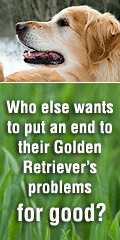There are many ways of obtaining a new pet though using the professional services of a puppy finder company is a good option. With such means you can find the puppy of your dreams and all you need to do is follow a few simple steps. For one, you can use a puppy finder’s search feature to look for different puppies for sale listings. This is a unique feature that every puppy finder offers and which helps to pinpoint your dream puppy in quick time and in case you fail to find what you is looking you have another option open to you.
Fill Out A Form
You can simply fill out a puppy finder form in which you can spell out all of your needs and then let the service do the rest for you. A good puppy finder service will let you sit back and then relax while it does all the heavy spadework for you. Such services usually have dedicated team of workers who specialize in finding suitable puppies and who will also deal directly with certain reputable dog breeders and this in turn will ensure that you get what you want and at a cost that you can afford.
There are several other advantages to letting a puppy finder service source your puppy for you including being offered health guarantees and in case you have other doubts about the service and what it offers to you, you can simply go through their Frequently Asked Questions (FAQs) to get answers to all of your.
It is also possible to allow a puppy finder service reserve a puppy for you though this also means having to pay a deposit (usually non-refundable and in the region of five hundred dollars) which ensures that you are serious about getting a puppy from the puppy finder company.
A puppy finder company for its part will get in touch with reputable breeders and will let you know (within 3 business days) about availability. The company also will help clear up your doubts and will provide professional help and will screen breeders to ensure that you get your dream puppy with least fuss and from the best source. Once a suitable puppy has been located and you decide to go ahead and take him in you can then expect the puppy finder service to ship you the puppy of your choice within a reasonable short time. In the meantime you can track your puppy through online information provided to you on the company’s website.
Once your dream puppy has arrived at your home you can then start worrying about the best methods of puppy training and decide whether to do the training on your own or get professionals to do it for you.
Using the services of a puppy finder service certainly makes sense. However, makes sure to only deal with a company that is reputable and which can show you referrals from previous satisfied customers.
For more about puppies please visit www.puppycareblog.com


